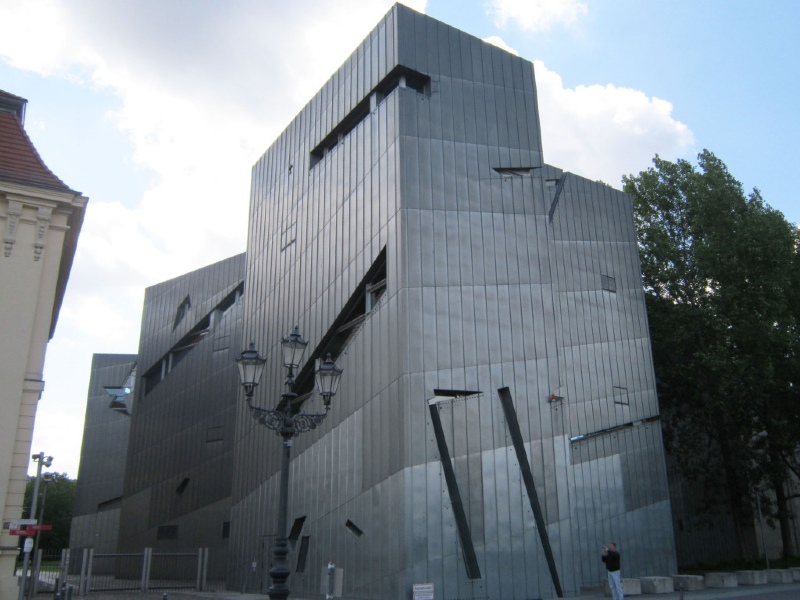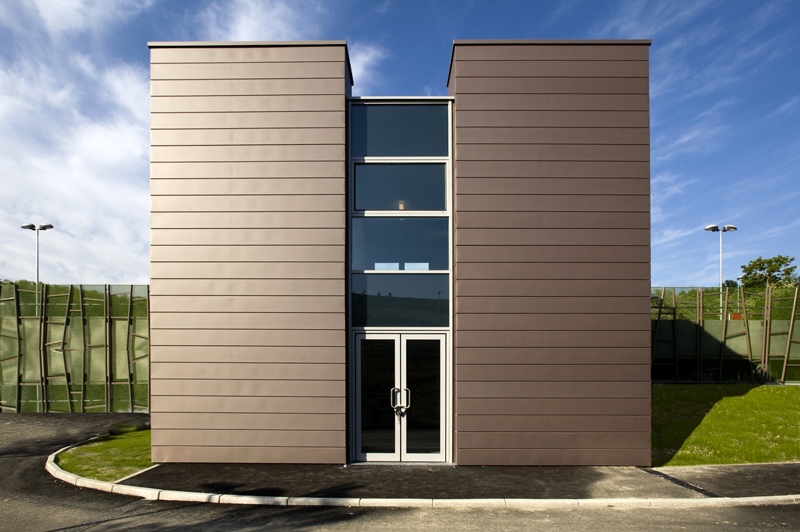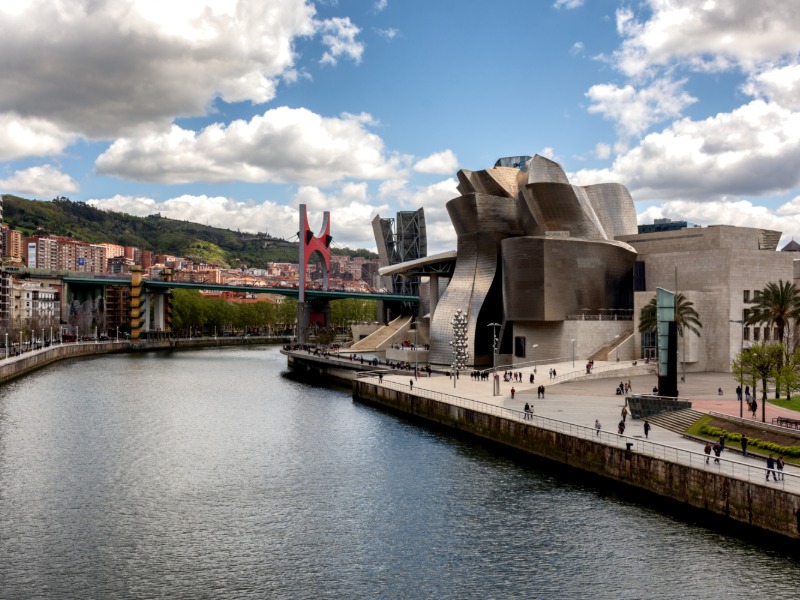Zinc has been used in architecture since Roman times, but as an oxidisable alloy formed from copper (Cu) and zinc (Zn): brass. Industrial production of zinc was in fact only possible in the mid-18th century. This is a material with exceptional aesthetic quality and characteristics of high strength and reliability: there are buildings still in use today with zinc roofs made more than a century ago.
In response to growing demands in the range of physical and mechanical parameters, industry technology has developed a new generation of zinc-titanium. The name titanium originates from the giants of ancient Greek mythology. The material was discovered in 1790 by Rev. W. Gregor, who managed to isolate the oxide from the black magnetic sand of Cornwall in the south of England.
In 1946, large-scale industrial production of titanium in the form of a sponge began, obtained through a chemical process of reduction of titanium tetrachloride with magnesium developed by the Luxembourgish W.J. Kroll. Within a few years, it became a material widely used in aerospace, chemical, electrical and other industries, as well as in architectural, civil engineering and for general purpose applications.
Currently, the composition of zinc-titanium laminate used today in architecture is an alloy of zinc (99.8%), copper (0.7-0.9%) and titanium (0.08-0.12%).
FRANK O. GEHRY AND ZINC-TITANIUM: A SPECIAL RELATIONSHIP THAT MADE THEM FAMOUS
The famous architect Frank O. Gehry used zinc-titanium as the coating material of the Guggenheim Museum in Bilbao in 1991, in what is now called one of the most famous buildings of the twentieth century. Gehry opened the doors to the use of a material still little explored in architecture, first understanding its charm and strong expressive component.
The architect chose to use zinc-titanium as a museum cladding, in the building’s facades facing the river, applying ductile and resistant metal sheets, despite the scant thickness of 0.3 mm. The quality that makes titanium zinc special is its ability to reflect the context, the river and the cloudy sky of the city, making the building a dynamic and ever-changing architecture.
Following the Bilbao work, Gehry continued his research and application of zinc-titanium, also in other projects that have also become famous, including the Walt Disney Concert Hall, the Ray and the Maria Stata Centre located at the Massachusetts Institute of Technology (MIT), and the Frank Gehry’s Lou Ruvo Centre in Las Vegas.
After Gehry, other architects have seen a glimpse of the enormous potential of this cladding material, among the best known examples are: Kiasma in Helsinki, by Steven Holl and the Jewish Museum in Berlin by Daniel Libeskind.

THE CHARACTERISTICS OF TITANIUM ZINC LAMINATE
Thanks to its ease of processing and plasticity, zinc-titanium can be used in complex architectural projects, of new construction and / or building renovation, for roofs or facades, where high strength and durability, as well as visual impact performance are required.
The life expectancy of a zinc-titanium coated roof is between 80 and 100 years, while a facade can have a life span of over 150 years. Since zinc is a natural material, the titanium alloy deteriorates depending on the environment in which it is placed.
It can be applied without problems even in seaside resorts, there are in fact examples of zinc roofs, produced over 100 years ago, which do not have any particular maintenance problems, barring colour variations.
As a construction material, titanium zinc is available in sheets with a standard format of 1000 × 2000 mm and variable thickness (0.60 – 0.65 – 0.70 – 0.80 – 1.00 mm). Generally speaking, the thinner material is used for cladding, roofing and sheet metal works, while the thicker material is used for large-format facade panels.
APPLICABLE ON EVERY SHAPE
Zinc-titanium laminate is a material with excellent malleability and extraordinary ease of processing. These qualities allow its application on different types of surfaces, starting from simple flat or pitched roofs, up to more complex and curved shapes.
Double seaming, angular seaming, slats and split tiles are some of the methods of application of metal laminates in architecture, including zinc-titanium, each of which generates different textures capable of giving uniqueness to the building.
The designer is therefore free to shape the architectural volumes, using a single material, or choose to enhance elements and details through the zinc-titanium facade coatings, making use of the different joining techniques.
A NATURALLY CAPTIVATING COLOUR
Titanium zinc has a natural dark grey colour, similar to stainless steel; it has the proper colour of the metal alloy, determined by the zinc carbonate coating which provides the material with a characteristic and unique colour, the warm grey, without the need to use gradations obtained synthetically. The neutral quality of the zinc-titanium colouring gives the buildings an elegant and minimal appearance, so as to be able to insert it in contemporary buildings, but at the same time it converses well with the materials related to tradition, harmoniously inserting itself also in the historical centres.
It is a unique material of its kind, capable of giving its best in every context. Whether it is a sunny or cloudy day, that the sun is affecting the facade surface, or that it is in the shade, the viewer’s perception of colour changes, making the architecture variable in the surrounding conditions.
In the producers’ market, a company called VMZINC has recently managed to obtain a colour different from the natural one, with the PIGMENTO (Pigment) range, produced from a QUARTZ-ZINC substrate, to which natural pigments have been added. The product, in addition to the exceptional and original aesthetic quality of the iridescent colours obtained (earth red, lichen green, ash blue and bark brown); it has the characteristic of resisting corrosion like no other.

CORROSION PROTECTION
Titanium zinc, exposed to air, has the characteristic of forming a particular thin oxide film which, through the action of water and carbon dioxide, is transformed into basic zinc carbonate. Unlike ordinary zinc, characterised by a blue-grey colouration, titanium-zinc has a thicker coat, which prevents surface degradation and corrosion more effectively.
In general, the durability of a metal surface is directly correlated to the thickness of the foil. In the case of ordinary zinc, a covering made up of sheets 0.8 mm thick, placed in an urban context, can withstand weathering up to 40 years, while in conditions of less stress, the duration of the same sheet can be up to 60 years, without experiencing problems of wear and tear.
Titanium alloy, with a considerable improvement, has an expected life span of up to 100 years.
CONTACT WITH OTHER METALS
The different architectural components made with different metals cannot come into contact with each other, since a chemical process of contact corrosion and other undesirable effects could be triggered.
In the case of copper roofing, rainwater that flows from the roof can trigger electrochemical corrosion phenomena on the surface of the zinc-titanium laminate, causing the formation of humidity and rust stains that are difficult to remove.
RELIABLE AND SUSTAINABLE
Careful design and the use of quality materials are some of the fundamental requirements for the construction of durable and sustainable buildings.
The durability of the zinc-titanium laminate, which over the years allows us to observe the constant and natural change in appearance taking place in the building, also depends on the formation of the coating, a self-regenerating and corrosion-resistant protective oxide film. Although at the beginning of its life cycle, zinc-titanium has a negative energy balance, due to the high production cost, it can be considered as an energy-sustainable material, thanks to its ability to last for centuries and the almost completely non-existent maintenance requires that it has.
Furthermore, it is also completely recyclable and compatible with environmental impact laws.



